Scarletina Bolete / Summer / Autumn / Edible
Scientific Name
Neoboletus Praestigiator or Neoboletus Luridiformis
Common Names
Scarletina bolete,
Family
Boletaceae
Habitat
Can be found in mixed and evergreen woodlands but most often associated with oak and birch.
Description
An edible and tasty member of the bolete family, care must be taken when harvesting this mushroom as some of its look-a-likes are toxic.
Identifying Features:
Cap:
Brown when young they tend to lighten with age. They are almost velvety when young but soon become smooth.
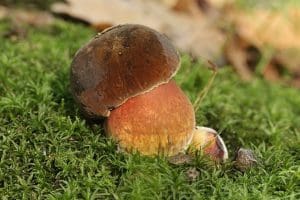
Stem:
Yellow but covered in tiny red dots. When cut in half the stem to turn dark blue to black almost instantly. The whole flesh of the mushroom will undergo this colour change when damaged.
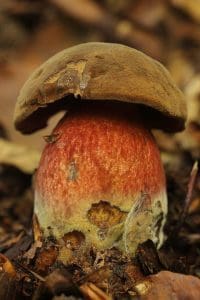
Gills:
Rather than gills this mushrooms has pores. They are yellow to red when young and darken with age, they will bruise blue/black when damaged.
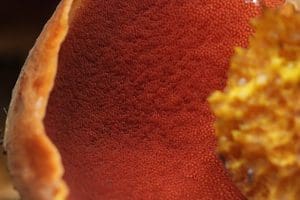
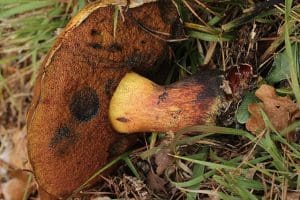
Smell:
Mushroomy.
Spores:
Green to Brown.
Uses
In food
In my opinion they are right up there with the Penny Bun (Boletus Edulis) they have a deep fungal flavour and a lovely firm texture. They can cause gastric upset when raw so must be thoroughly cooked therefore making them unsuitable for drying.
The flesh will turn blue to black when they are damaged but it will go back to creamy yellow when they are cooked.
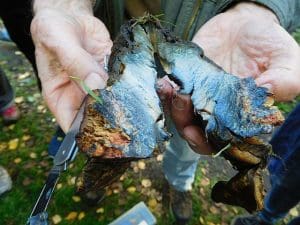
Harvesting
This is not a beginners mushrooms as it breaks the rule that we teach beginners when identifying boletes which is “red or blue will make you spew”
They are often found growing in the same places as Penny Buns (Boletus Edulis)
Known hazards
Tasty for most but they can cause gastric issues in roughly 1 out of 5 people.
Potential lookalikes
The Lurid Bolete (Suillellus Luridus) and the Devils Bolete (Boletus Satanas) both do look similar but they both have a red mesh on the stem, unlike the red dots on the Scarletina.
The Deceiving bolete (Boletus Queletii) also has dots on the stem but they are yellow to buff in colour not red. Confusing the two would be a harmless mistake as it’s also edible after cooking and is also very tasty.



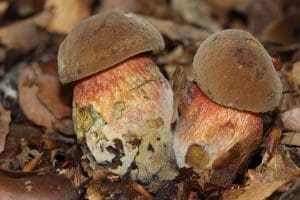



Leave a Reply
You must be logged in to post a comment.